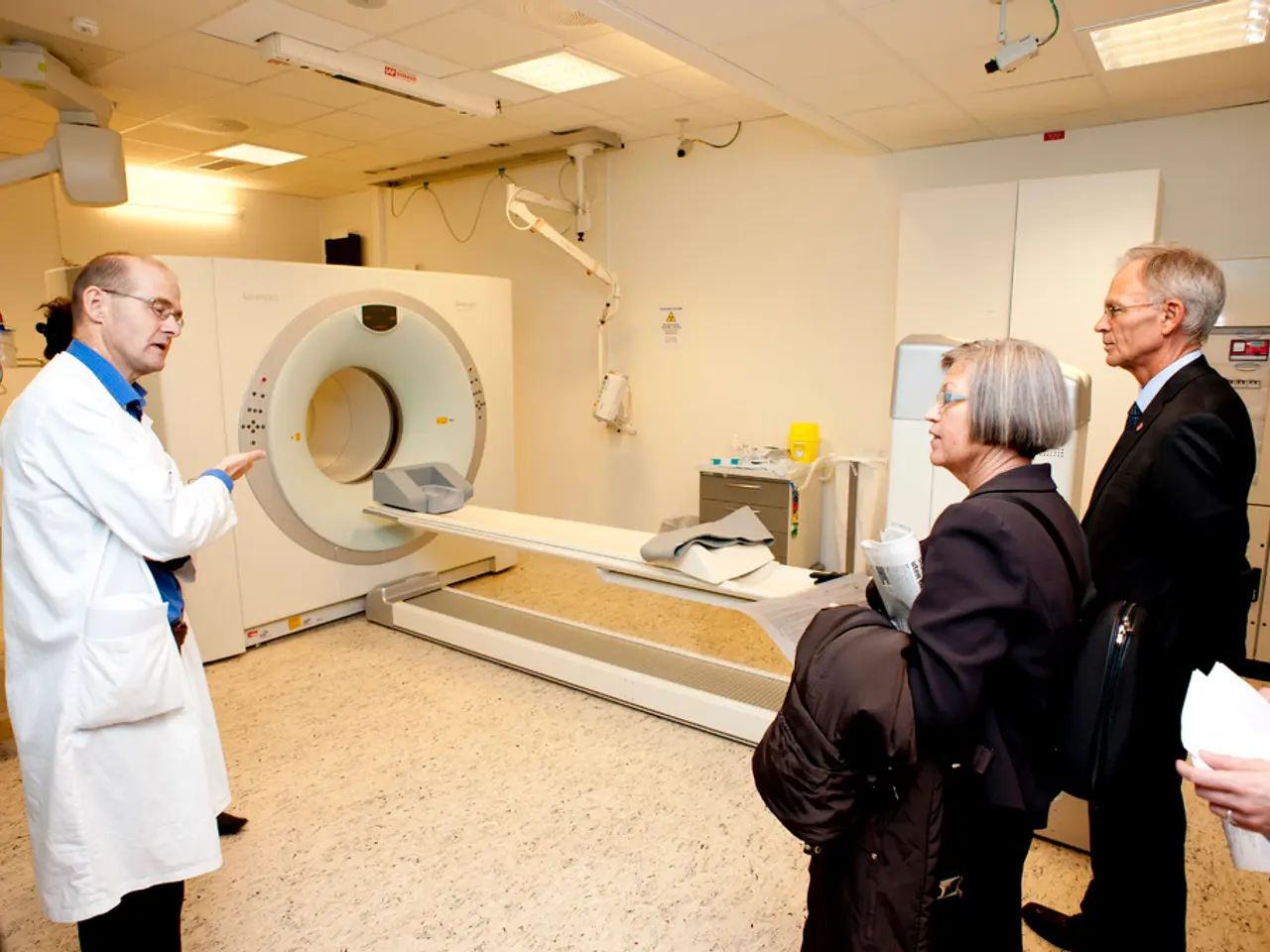Age-Related Dementia Prediction: Novel Brain Scan Method Identified
A groundbreaking study has developed a new method, DunedinPACNI, that can predict an individual's rate of aging using a single, non-invasive MRI scan. This innovative tool, based on brain structural data, shows a moderate but meaningful accuracy in estimating biological age and the risk of age-related disorders, comparable to next-generation epigenetic aging biomarkers.
The DunedinPACNI was developed using data from the Dunedin Study, a decades-long longitudinal study tracking over 1,000 individuals and capturing multiple aging-related physiological markers. Using MRI scans taken at age 45, the tool was trained to estimate the Pace of Aging score from brain structural data alone.
The tool's accuracy and predictive power have been extensively tested across various datasets, including the Alzheimer’s Disease Neuroimaging Initiative (ADNI), UK Biobank, and BrainLat, totaling over 50,000 brain scans. It reliably predicted outcomes related to accelerated aging, such as cognitive impairment, faster brain atrophy, dementia diagnoses, frailty, chronic diseases, and mortality in older adults.
Individuals with higher DunedinPACNI scores (indicating faster biological aging) were found to be about 60% more likely to develop Alzheimer’s disease years later, highlighting its potential as a predictive tool for neurodegenerative diseases.
The performance of the DunedinPACNI aligns with that of next-generation epigenetic biomarkers, which similarly predict biological age and age-related health outcomes. Unlike epigenetic clocks that require blood or tissue samples, DunedinPACNI uses a single MRI scan, which may have advantages in scalability and direct brain health assessment.
While the study's findings are promising, there are limitations to the DunedinPACNI. The specific population data used to train the model (mostly European ancestry, from a specific geographical location) may limit its applicability to other ethnicities. Additionally, the tool infers dynamic processes from one static image (one MRI snapshot), and its performance in younger or pediatric populations is untested.
Despite these limitations, the DunedinPACNI is a robust MRI-based biomarker that accurately estimates a person's biological aging pace with predictive power comparable to advanced epigenetic methods. This makes it a promising tool for clinical and research applications focused on aging and age-related neurological disorders.
By highlighting risk decades in advance, the tool empowers people to take proactive steps that may slow or even reverse aspects of biological aging. Modifications in lifestyle, such as following a healthy diet, exercising regularly, getting adequate sleep, not smoking, and not drinking alcohol to excess, can help slow a person's rate of aging and delay or prevent age-related disorders.
In summary, the DunedinPACNI is an exciting development in the field of aging research, offering a non-invasive, accessible measure of aging processes throughout the body. More global validation is needed to fully understand its potential and applicability across different ages, ethnicities, and health backgrounds.
- The DunedinPACNI, a prediction tool for an individual's rate of aging, was developed using data from the Dunedin Study, focusing on mental health, aging, and seniors.
- This new method, comparable to next-generation epigenetic aging biomarkers, predicts age-related medical-conditions like Alzheimer's, dementia, and cognitive impairment, all neurological disorders.
- The tool's effectiveness in foreseeing neurodegenerative diseases, like Alzheimer's, highlights its potential in the field of health-and-wellness, particularly in the scientific study of aging and longevity.
- Unlike other methods using blood or tissue samples, the DunedinPACNI only requires a single MRI scan, making it easier to scale and directly assess brain health.
- By identifying risks decades in advance, the DunedinPACNI encourages proactive measures such as a healthy diet, regular exercise, good sleep hygiene, and avoiding smoking and excess alcohol, which can slow a person's rate of aging and potentially prevent age-related disorders.




